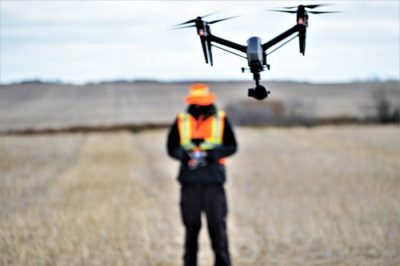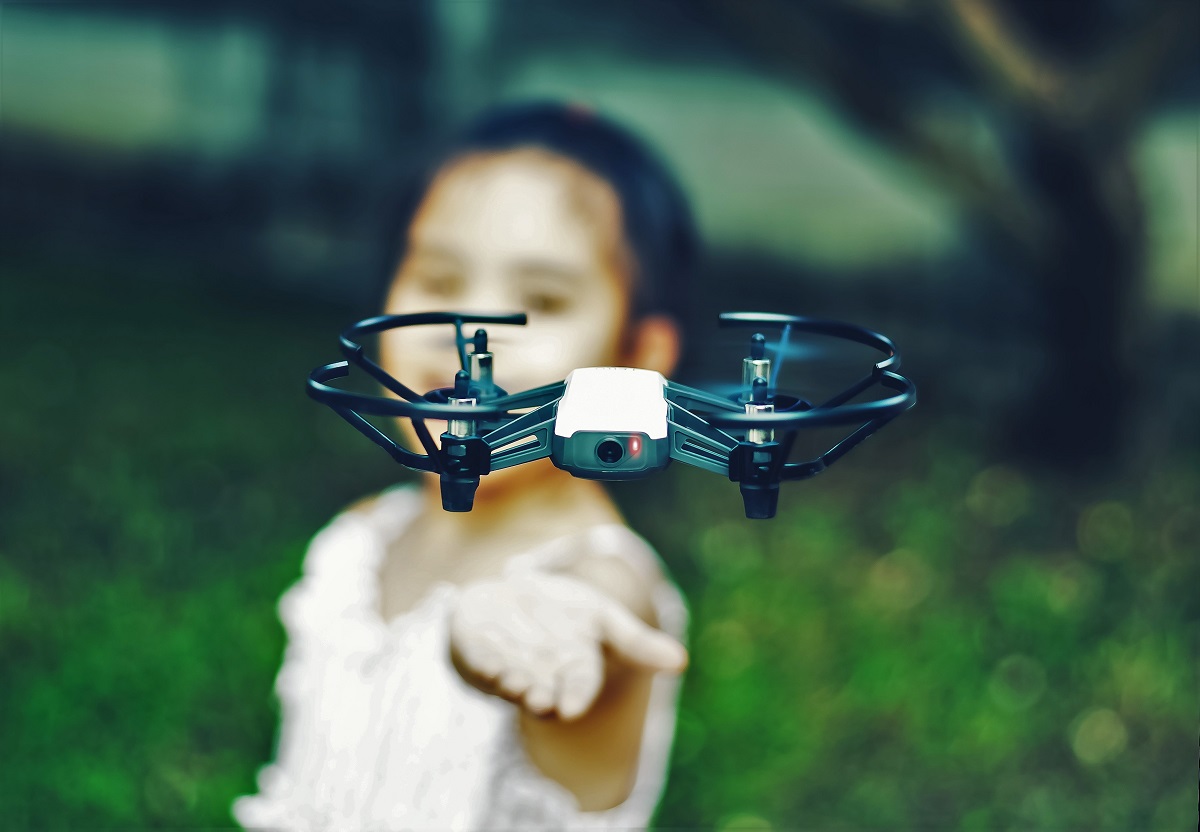The question of “which drone show should I go to?” is one we get fairly often, but we find the best way to answer that question is with more questions. What exactly is someone looking to learn about the technology? Where and how is it being applied? Who is going to use it? Anyone whose answers to those questions have been centered on drones in the classroom and how students should be learning about the UAVs have had very limited options when it comes to which drone show is going to be best for them. Luckily, a new event is designed to specifically address this topic and audience.
Frontier School Division and M3Aerial Productions have collaborated to organize a conference called “Western Drone Show”, set to take place on May 3rd, 2019 in Winnipeg, Manitoba. The event is designed to bring UAV education, standards and industry together. With the event’s strong educational component, teachers from across Canada have been invited to attend alongside numerous industry experts and enthusiasts to explore and understand what it means to properly introduce drones into the classroom. They’ll have drone cages set up for people to test out their flight skills, as well as simulators and a "Build A Drone" demo station.
Matthew Johnson
 I know many of these topics are going to be discussed in detail at the Western Drone Show, so what can you tell us about how drone technology is currently being discussed and addressed in classrooms across Canada?I think that the general knowledge about drones and how they are affecting various industries and society around us is not appropriately understood by a majority of teachers and school administrators. There is still a strong stigma that drones are simply "toys" that might just be a temporary fad, and so many of these people may not give them a second thought. Sometimes you need to bring the steak to the sizzle, and thus we've invited teachers, principals and superintendents from across Canada to attend the Western Drone Show on May 3rd to show them just what these powerful little machines are capable of.We couldn't simply have an educational conference about drones though, because a huge focus of this conference is to introduce the players in the drone industry to the educators. Thus, in order to bring in the drone industry, we had to provide value to the drone industry. The conference speakers and exhibitors are set up specifically to provide attendees insight into some of the latest and greatest that the drone industry has been up to, so that engineers, scientists, entrepreneurs and educators can all find value in what the conference has to provide. We have GIS, precision agriculture, film and cinema, and many other aspects of the industry represented with speakers and exhibitors. Manufacturers will be displaying some of the latest high-tech equipment available, such as hyperspectral and multispectral sensors and the aircraft, and we also have a special treat... if weather permits, we will have a demonstration day for some of our exhibitors to show off their equipment in action on the following day, May 4th. Sally French mentioned that the event is primarily targeted at showcasing how drones can be used for educational purposes, so what kind of insights do you hope that teachers, principals, superintendents and students will be able to take away from it?We want educators and students to leave the conference excited about the prospects of using drones across a wide range of subject disciplines. We have Arif Kassum from the Frontier School Division who will be presenting about how this northern and remote school division in Manitoba has been a Canadian leader by figuring out how to successfully integrate drones as learning tools across their division. When students hear Sally's story, they'll be pumped up and ready to fly at the first chance they get! We are excited to have her speak at the event this year! Are there any sessions or speakers that you’re especially looking forward to presenting?I am particularly looking forward to hearing from Dr. Dion Wiseman from Brandon University as he discusses how his Advanced Geomatics program has been utilizing drones over the past decade or so, and also from Dr. Paul Cooley who will be speaking about the exciting work he has been doing for the Canadian Space Agency using drone technology! What are you looking forward to seeing happen or develop in the drone industry in 2019?I think we are all buzzing about BVLOS, especially after the testing that took place in Canada last year. We are also particularly interested in the new regulation that specifically allows for up to 5 aircraft to be flown simultaneously from the same ground station. Swarm technology has been a very big interest for us over the past few years, and we are excited that some of the research and development we have been working on will have an opportunity to be used without as much red tape as we had previously expected! If I’m someone who thinks the Western Drone Show might be a fit for me, but I’m not sure how to convey the value of going to my colleagues or superiors, what would you tell me? It's an uphill battle trying to convince someone about the value in something they may not know much, or anything, about. Thanksfully, it's a battle that the industry is slowly winning and people are slowly starting to recognize the value that drones are currently providing, and the immense potential that this technology has in store.Any company or organization that conducts operations outdoors, or even many in underground or confined spaces should explore the possibilities that drones may be able to add in terms of safety and efficiency. A quick online search will come up with hundreds or thousands of value propositions where drones have essentially revolutionized the way some aspects of industry has been conducted.The Western Drone Show will help summarize those values at one event and will provide a great opportunity to those attending. To learn more about or attend the Western Drone Show, visit their site.
I know many of these topics are going to be discussed in detail at the Western Drone Show, so what can you tell us about how drone technology is currently being discussed and addressed in classrooms across Canada?I think that the general knowledge about drones and how they are affecting various industries and society around us is not appropriately understood by a majority of teachers and school administrators. There is still a strong stigma that drones are simply "toys" that might just be a temporary fad, and so many of these people may not give them a second thought. Sometimes you need to bring the steak to the sizzle, and thus we've invited teachers, principals and superintendents from across Canada to attend the Western Drone Show on May 3rd to show them just what these powerful little machines are capable of.We couldn't simply have an educational conference about drones though, because a huge focus of this conference is to introduce the players in the drone industry to the educators. Thus, in order to bring in the drone industry, we had to provide value to the drone industry. The conference speakers and exhibitors are set up specifically to provide attendees insight into some of the latest and greatest that the drone industry has been up to, so that engineers, scientists, entrepreneurs and educators can all find value in what the conference has to provide. We have GIS, precision agriculture, film and cinema, and many other aspects of the industry represented with speakers and exhibitors. Manufacturers will be displaying some of the latest high-tech equipment available, such as hyperspectral and multispectral sensors and the aircraft, and we also have a special treat... if weather permits, we will have a demonstration day for some of our exhibitors to show off their equipment in action on the following day, May 4th. Sally French mentioned that the event is primarily targeted at showcasing how drones can be used for educational purposes, so what kind of insights do you hope that teachers, principals, superintendents and students will be able to take away from it?We want educators and students to leave the conference excited about the prospects of using drones across a wide range of subject disciplines. We have Arif Kassum from the Frontier School Division who will be presenting about how this northern and remote school division in Manitoba has been a Canadian leader by figuring out how to successfully integrate drones as learning tools across their division. When students hear Sally's story, they'll be pumped up and ready to fly at the first chance they get! We are excited to have her speak at the event this year! Are there any sessions or speakers that you’re especially looking forward to presenting?I am particularly looking forward to hearing from Dr. Dion Wiseman from Brandon University as he discusses how his Advanced Geomatics program has been utilizing drones over the past decade or so, and also from Dr. Paul Cooley who will be speaking about the exciting work he has been doing for the Canadian Space Agency using drone technology! What are you looking forward to seeing happen or develop in the drone industry in 2019?I think we are all buzzing about BVLOS, especially after the testing that took place in Canada last year. We are also particularly interested in the new regulation that specifically allows for up to 5 aircraft to be flown simultaneously from the same ground station. Swarm technology has been a very big interest for us over the past few years, and we are excited that some of the research and development we have been working on will have an opportunity to be used without as much red tape as we had previously expected! If I’m someone who thinks the Western Drone Show might be a fit for me, but I’m not sure how to convey the value of going to my colleagues or superiors, what would you tell me? It's an uphill battle trying to convince someone about the value in something they may not know much, or anything, about. Thanksfully, it's a battle that the industry is slowly winning and people are slowly starting to recognize the value that drones are currently providing, and the immense potential that this technology has in store.Any company or organization that conducts operations outdoors, or even many in underground or confined spaces should explore the possibilities that drones may be able to add in terms of safety and efficiency. A quick online search will come up with hundreds or thousands of value propositions where drones have essentially revolutionized the way some aspects of industry has been conducted.The Western Drone Show will help summarize those values at one event and will provide a great opportunity to those attending. To learn more about or attend the Western Drone Show, visit their site. 















Comments